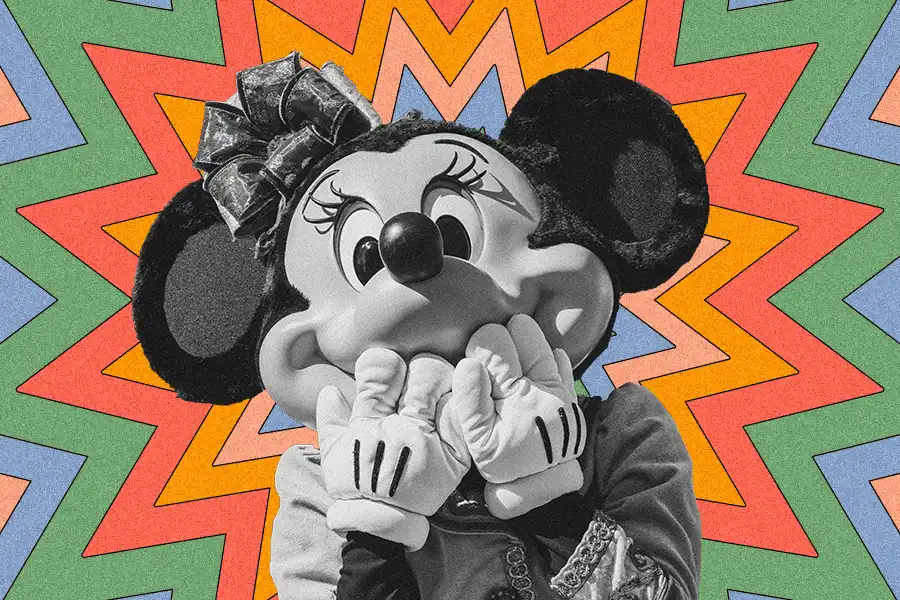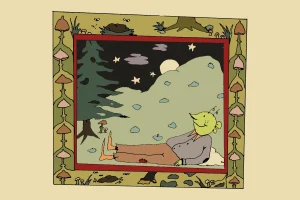After 14 years of unsuccessful therapy, a 28-year-old woman found relief from her treatment-resistant depression in ketamine therapy. She described her two sessions as profound and transformative. However, when she returned to the treatment six months later, something had changed. Specifically, she reported that she had involuntary hallucinations of “Disney iconography” which “hijacked” her treatment.
“Before the ketamine, I was shopping for Disney pins, like, a lot of the day,” the woman explained in a recent study about her experience. “And then I felt like the first treatment was ruined because I just saw Disney.”
Her case is an example of how media might influence what people see and feel during psychedelic-assisted therapies, as described recently in the Journal of Psychopharmacology by Nicolas Garel at McGill University and Julien Thibault Lévesque at the Lady Davis Institute for Medical Research.
Entertainment, apps, and social networking platforms are increasingly dominating modern culture. American adults may spend seven hours a day looking at internet-connected screens, according to statistics, and terms such as “doom-scrolling” and “binge-watching” have become commonplace. At the same time, the psychedelic landscape is rapidly developing. Ketamine-assisted therapy has boomed in the US over recent years, and medical MDMA and psilocybin were recently approved by the Australian government in light of such efforts.
As these psychedelic-assisted interventions evolve, there could be instances when they’ll be impacted by what people are consuming through watching, reading, scrolling. Set and setting are well-established factors in helping control a patient’s experience. Yet, the ongoing immersion of media as a “setting,” isn’t well considered in psychedelic research papers.
READ: Does Ketamine Have A Dark Side?

Before her first ketamine treatment, the 28-year-old woman, referred to as “Patient One” had no access to electronic devices. This treatment was emotionally powerful and provided important insights into her life.
How to Grow Shrooms Bundle
Take Both of Our Courses and Save $90!
In her second treatment, however, the patient spent the weeks prior trading virtual Disney pins on a marketplace app. “Disney stuff” kept appearing and significantly blunted the meaningfulness of her experience. “I just saw Disney stuff I didn’t want to!” she said. “It felt like I almost ended up going to important things and then Disney frickin’ covered it up.”
After talking to her therapists, Patient One quit her online habits before further treatments. Her subsequent ketamine trips became, yet again, more personally meaningful and mystical, with seemingly more significant benefits to her personal growth.
A second patient from the paper was a “serial video game player.” He also reported media-impacted ketamine trips during his initial treatments: He saw frequent Minecraft-like hallucinations, and described having a “pixelated consciousness.” When he stopped playing video games before treatment, he said he had more purposeful journeys and therapeutic benefits.
The authors of the paper called the media’s delayed effect on the patients’ altered states “imprinting.” The authors argued imprinting should be an essential consideration in preparing for a psychedelic experience, especially in the context of psychedelic therapy.
They also argued that imprinting isn’t limited to just ketamine, but to all altered states of consciousness. In dream research, psychologists have long recognized how elements of media can appear. One paper showed people who played more physically interactive video games had better dream control. In another study, participants instructed to play Tetris reported ” intrusive, stereotypical, visual images of the game at sleep onset.”
Casper, a 24-year-old student from Berlin, similarly experienced imprinting during a trip on LSD. He wrote, “I was tripping once with my girlfriend on quite a high dose and her face began morphing through different movie characters. Quite a lot of them were soft cartoonish animals, including several Disney characters, such as Bambi and Nala from The Lion King.”
Casper found the Disney characters’ presence to be as “minimal in terms of emotional meaningfulness and insight.” However, he described the imprinting effect as “superficial and sort of irrelevant” with no impact, neither dulling down nor increasing the trip’s significance.
On the other hand, another person found imprinting hugely valuable in a profound yet rather peculiar Harry Potter-themed trip. “There was a very strong element of environmental exposure, or imprinting as the article describes it that influenced the psychedelic experience,” said Dom, a 30-year-old IT manager from the UK.
“The most striking influence was the intense physical feeling of being a snake, a whole-body sensation of being a snake that was slithering around and existing in the drains and sewers of a castle,” she said. “Snakes play a particularly crucial role in the book and the wider Harry Potter universe. My previous experiences with LSD have not had this very physical, transformation aspect, nor the very overwhelming pleasure that accompanied it.”

In the study, the authors referred to the REBUS (Relaxed Beliefs Under Psychedelics) model to understand why imprinting might occur. Popularized by neuroscientist Robin Carhart-Harris, this model describes how psychedelic drugs might weaken the brain’s ability to control sensory information processing, making it more open to inputs from its environment. This might increase the chance media appears during a psychedelic experience.
Guides have started cautioning patients to be careful about their media use in the days and weeks leading up to psychedelic ceremonies and therapy.
“In clinical trials, we suggest to participants that they are mindful of what they watch or read prior to their psychedelic experience,” said Michelle Baker-Jones, lead therapist for Small Pharma’s ongoing DMT for depression trials. “We advise against horror films or true crime. One participant did find that their experience included material from a frightening programme they had watched the night before. Thinking about psychedelics as nonspecific amplifiers is helpful here. What does the individual want to amplify?”
Ben Sessa, a psychiatrist and founder of the AWAKN ketamine clinics, also advises psychedelic therapy patients to change their media use before treatment. However, he shared less concern about media content, but rather how it could affect connectedness.
“Psychedelic therapy is all about fostering connection,” Sessa said. “If our ketamine patients want to watch horror movies in the lead up to therapy then fine. But it would be better if they do it with a group of friends for a joint experience they can bond over, than on their own.”
READ: Ketamine Therapy and Virtual Reality Together? Welcome to the Future

In psychedelic retreats, Beatrix Bliss, a psychedelic facilitator, co-founder, and former Director of Alalaho Retreats and her facilitation team advise participants to hand in their phones for the retreat duration. “People become more porous and sensitive during psychedelic experiences, they could become more susceptible to social media’s harmful effects,” she explained.
As well as decreasing the chance for harm, Bliss also highlighted the benefit-enhancement digitally detoxing has during psychedelic retreats. “It can be akin to the psychedelic experience itself,” she said, describing how participants report marked increases in felt sense of connection to self and others simply without their phone. “They get nervous about switching it off at the start, but by the end of the retreats, they don’t want it back,” she said.
By “making the psychological consequences of excessive media habits readily apparent,” the case study authors proposed psychedelic-assisted therapies could help foster better relationships to how much and for what purpose we scroll.
How to Grow Shrooms Bundle
Take Both of Our Courses and Save $90!
This happened to Patient One: She quit Disney pin trading after her final ketamine treatment. She said that her trip revealed to her the destructive motivations behind and consequences of her media addiction.
“Now I’m aware when I’m doing that to numb myself, basically,” she said.

DoubleBlind is a trusted resource for news, evidence-based education, and reporting on psychedelics. We work with leading medical professionals, scientific researchers, journalists, mycologists, indigenous stewards, and cultural pioneers. Read about our editorial policy and fact-checking process here.

DoubleBlind Magazine does not encourage or condone any illegal activities, including but not limited to the use of illegal substances. We do not provide mental health, clinical, or medical services. We are not a substitute for medical, psychological, or psychiatric diagnosis, treatment, or advice. If you are in a crisis or if you or any other person may be in danger or experiencing a mental health emergency, immediately call 911 or your local emergency resources. If you are considering suicide, please call 988 to connect with the National Suicide Prevention Lifeline.



